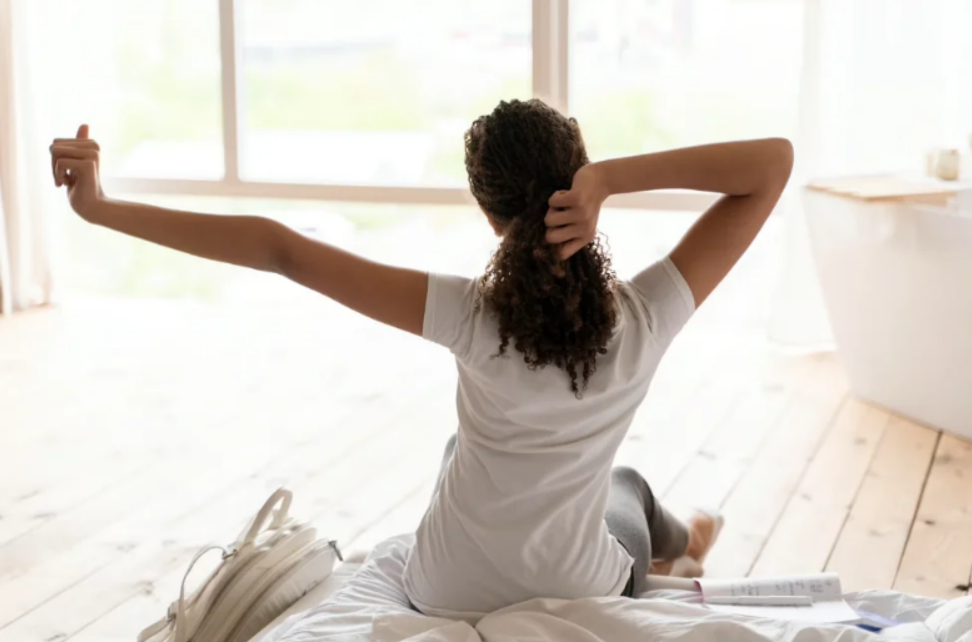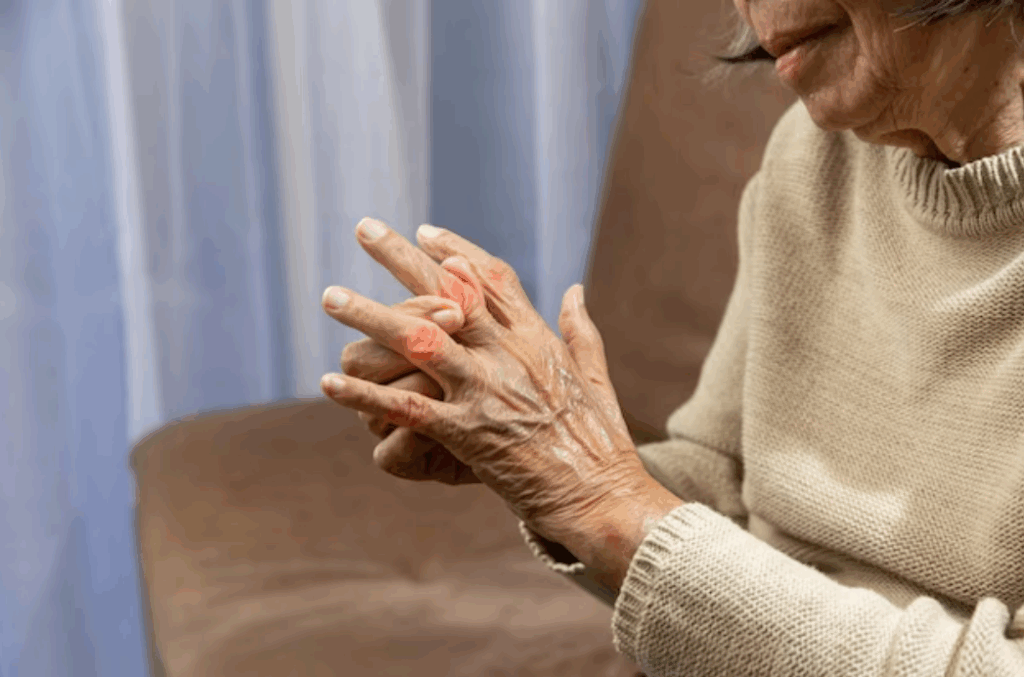If you're tired of relying on over-the-counter medications for headache relief, there are several natural approaches you can try that may help. From staying hydrated to exploring essential oils, small adjustments in your daily routine can make a difference. You'll find that simple practices, like maintaining good posture and managing stress, can have a significant impact. But how do these methods work together to create a more holistic approach to relief? Let's explore the seven tips that could transform how you handle headaches.
Stay Hydrated
Many people underestimate the significance of staying hydrated when it comes to preventing headaches. You mightn't realize it, but dehydration can trigger painful headaches or even migraines. When your body lacks sufficient water, it struggles to function effectively, and that can lead to discomfort.
So, if you want to keep those headaches at bay, drinking enough fluids throughout the day is vital. Aim for at least eight 8-ounce glasses of water daily, but remember that your needs may vary based on activity level, climate, and personal health. If you're exercising or spending time in hot weather, you'll need to increase your intake.
Keep a water bottle handy to remind you to sip regularly. It's easy to forget hydration when you're busy, but making it a habit can work wonders for your overall well-being.
You can also incorporate hydrating foods into your diet. Fruits and vegetables like cucumbers, watermelon, and oranges not only quench your thirst but also provide essential nutrients. If you find plain water boring, try infusing it with lemon, mint, or berries for a revitalizing twist.
Be mindful of beverages that can dehydrate you, such as caffeine and alcohol. While they might give you a temporary boost, they can lead to increased fluid loss.
Practice Relaxation Techniques
Regularly practicing relaxation techniques can considerably reduce headache frequency and intensity. When you learn to calm your mind and body, you're better equipped to handle stress, which is often a key trigger for headaches. Incorporating these techniques into your daily routine can make a significant difference.
Here are some effective relaxation techniques you might want to try:
- Deep Breathing: Focus on your breath, inhaling deeply through your nose and exhaling slowly through your mouth. This helps lower stress and tension.
- Progressive Muscle Relaxation: Tense and then relax each muscle group, starting from your toes and working your way up. This helps release physical tension.
- Meditation: Spend a few minutes each day in silence, focusing your mind on a single point or mantra. This can improve your overall mental clarity and peace.
- Yoga: Engage in gentle yoga stretches that promote relaxation and flexibility. The combination of movement and breath work can be particularly beneficial for headache relief.
- Visualization: Imagine a peaceful scene or a place that makes you feel safe and happy. This mental escape can reduce stress and promote a sense of well-being.
Experiment with these techniques to see which ones resonate with you. By making relaxation a priority, you'll not only help alleviate headaches but also enhance your overall quality of life.
Apply Cold or Heat
Applying cold or heat can provide immediate relief for headaches, helping to ease pain and discomfort effectively. You can choose either method based on your preference and the type of headache you're experiencing.
If you're dealing with a tension headache or sinus pressure, applying a warm compress to your forehead or neck can work wonders. Heat promotes blood flow and relaxes tight muscles, which often contributes to headache pain. You can use a warm towel, heating pad, or even take a warm shower. Just be cautious not to make it too hot— you want it to be soothing, not burning.
On the other hand, cold therapy is particularly effective for migraines or throbbing headaches. Placing a cold pack or a bag of frozen vegetables wrapped in a cloth on your forehead can numb the pain and reduce inflammation. The cold constricts blood vessels, which can help alleviate the intensity of the headache.
Make sure to limit cold application to about 15-20 minutes at a time to avoid skin damage.
Experiment with both methods to see which one brings you the most relief. You might find that alternating between cold and heat works best for you.
Always listen to your body and adjust the temperature to your comfort level. With these simple techniques, you can take control of your headache pain and find relief quickly.
Explore Essential Oils
If you're looking for additional ways to relieve headache pain, exploring essential oils can be a great option. These natural extracts can provide soothing effects and help alleviate tension, making them a popular choice for headache relief.
Here are some essential oils you might want to take into account:
- Peppermint Oil: Known for its cooling effect, it can help relax muscles and improve circulation.
- Lavender Oil: With its calming properties, lavender can reduce stress and promote relaxation, which can be beneficial for headache relief.
- Eucalyptus Oil: This oil can help clear sinus congestion and relieve pressure, especially for headaches caused by sinus issues.
- Rosemary Oil: Often used for mental fatigue, rosemary can enhance circulation and may help reduce headache intensity.
- Chamomile Oil: Its soothing properties can help you unwind, making it effective for stress-induced headaches.
To use these oils, you can either diffuse them in your space or apply them topically.
When applying, always remember to dilute them with a carrier oil to avoid skin irritation. You can also create a calming massage blend by mixing a few drops with your favorite oil.
Just a few whiffs or a gentle rub can work wonders in easing your headache. So, why not give essential oils a try? They might just become your go-to solution for natural headache relief!
Maintain Good Posture
Maintaining good posture can greatly reduce the frequency and intensity of headaches. When you sit or stand with proper alignment, you minimize tension in your neck and shoulders, which are common headache triggers.
Think about how you position your body throughout the day. Are you slouched over your computer? Are you craning your neck to look at your phone? These habits can strain your muscles, leading to discomfort and headaches.
To improve your posture, start by being mindful of your body alignment. When sitting, keep your feet flat on the floor and your back against the chair. Your hips should be slightly higher than your knees, and your shoulders should be relaxed but not slouched.
If you're standing, distribute your weight evenly on both feet, keep your shoulders back, and engage your core. This simple adjustment can make a big difference.
You might also consider taking regular breaks to stretch and move. If you work at a desk, set a timer to remind yourself to check in on your posture every hour. Stand up, stretch your arms overhead, and roll your shoulders back.
Engaging in exercises that strengthen your core and back can further enhance your posture. Yoga or Pilates are excellent options to explore.
Consider Dietary Adjustments
Many people don't realize that dietary choices can play a significant role in headache management. By making some simple adjustments to what you eat and drink, you can potentially reduce the frequency and intensity of your headaches.
Here are some dietary changes you might want to contemplate:
- Stay Hydrated: Dehydration is a common headache trigger. Aim for at least eight glasses of water a day.
- Limit Caffeine: While caffeine can sometimes relieve headaches, too much can lead to withdrawal headaches. Monitor your intake and contemplate reducing it gradually.
- Identify Food Triggers: Certain foods like aged cheeses, processed meats, and artificial sweeteners may trigger headaches. Keeping a food diary can help you pinpoint your specific triggers.
- Eat Regularly: Skipping meals can lead to low blood sugar, which might cause headaches. Try to eat balanced meals and snacks throughout the day.
- Increase Magnesium Intake: Some studies suggest that magnesium deficiency may be linked to headaches. Incorporate foods like leafy greens, nuts, and whole grains into your diet.
Get Enough Sleep
How often do you consider the impact of sleep on your headaches? If you're like many people, you might overlook this vital factor. Getting enough quality sleep is essential for overall health and can greatly affect your headache frequency and intensity. When you don't get adequate rest, your body can become stressed, leading to tension headaches or migraines.
Aim for seven to nine hours of sleep each night. Establishing a regular sleep schedule can help your body regulate its internal clock, making it easier to fall asleep and wake up feeling refreshed. Try to go to bed and wake up at the same time every day, even on weekends. This consistency helps improve sleep quality and can reduce headache triggers.
Create a calming bedtime routine. Engage in relaxing activities before bed, such as reading, meditating, or taking a warm bath. Limiting screen time before sleep is also vital, as the blue light emitted from devices can interfere with melatonin production and disrupt your sleep cycle.
Pay attention to your sleep environment. Make sure your bedroom is dark, quiet, and cool. Consider investing in a comfortable mattress and pillows to support restful sleep.
If you're still struggling to get enough shut-eye, don't hesitate to consult a healthcare professional. They can provide guidance tailored to your specific needs.
Conclusion
By incorporating these natural headache relief tips into your daily routine, you can take control of your well-being. Staying hydrated, practicing relaxation techniques, and maintaining good posture are all simple yet effective ways to prevent headaches. Don't forget to explore essential oils and apply cold or heat when needed. With a few dietary adjustments and a consistent sleep schedule, you'll be well on your way to enjoying a headache-free life. Start today and feel the difference!



